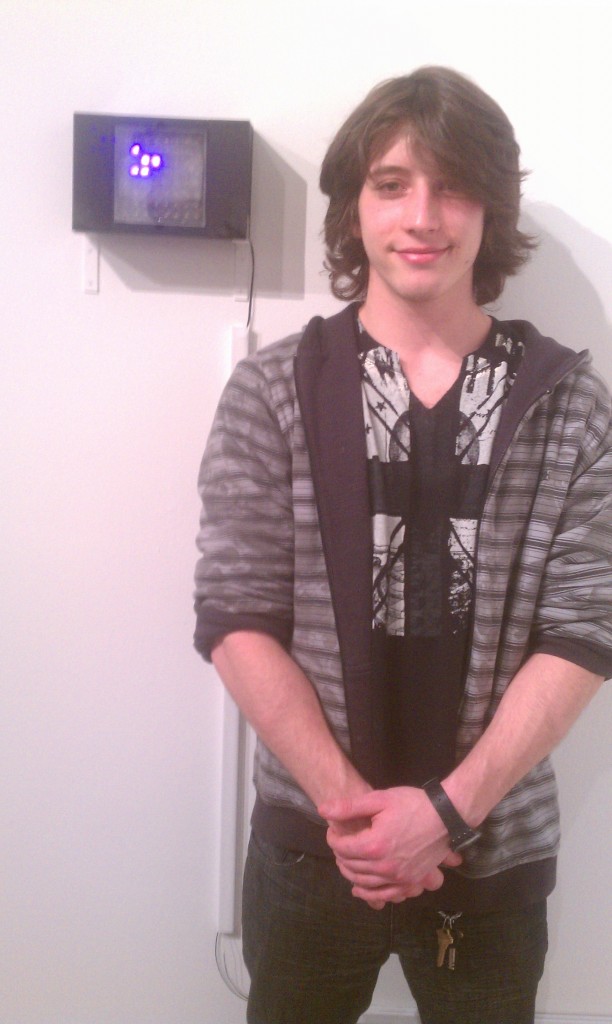The senior BFA show at The School of The Art Institute of Chicago opened last Friday and is currently showing. For the show I presented a project I had made in the Bio Art class last semester. The piece was an Ultraviolet LED grid programmed to display Conway’s Game of Life. In addition GFP bacteria (bacteria that glow green under UV light) were placed in a custom Petri dish on top of the UV LED grid. The intended goal was for the bacteria to function as pixels displaying the programmed game.
Conway’s Game of Life is a zero-player game that takes place on a square grid of arbitrary size (size being the width or height in units as opposed to a physical measurement). There are different ways to begin the game but the approach I took was randomly turning every LED on or off whenever the game reset. In the game each LED that is on represents a “live” cell and every LED that is off represents a “dead” cell. Because the LEDs are arranged on a square grid each has 8 neighbors (top, right, bottom, left, diagonals). The rules of the game are:
- If a living cell has 2 or 3 neighbors it remains on (alive).
- If it has less than 2 neighbors it dies of “under population” and if it has more than 3 it dies of “overpopulation” and turns off.
- A dead cell can come back to life if it has exactly 3 living neighbors.
All of these rules are run on the board for every LED in the grid at the same time once a second. If everything dies or a pattern continues for a minute then the game resets. An example of Conway’s Game of Life running can be found here.
Conway’s Game of Life is an idealized model (called a cellular automaton) that tries to represent single celled organisms interacting with one another. Placing the bacteria on top of the game then functions as real single celled organisms projecting idealized single celled organism interactions.
Article Written by: Alex Simes


